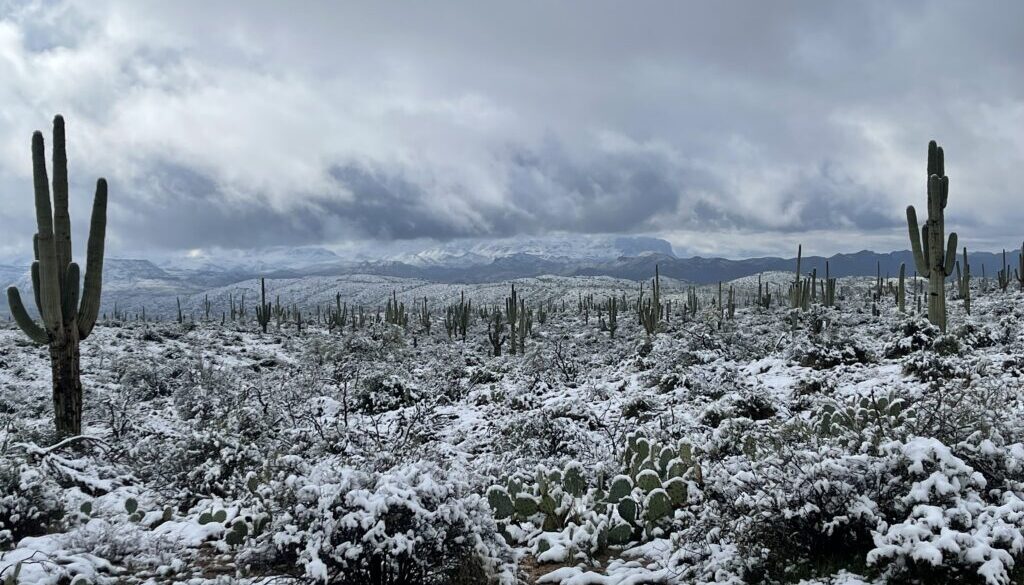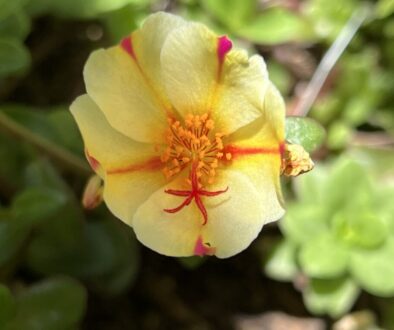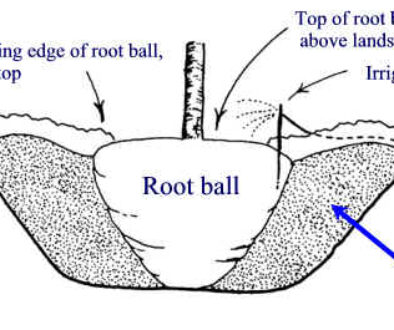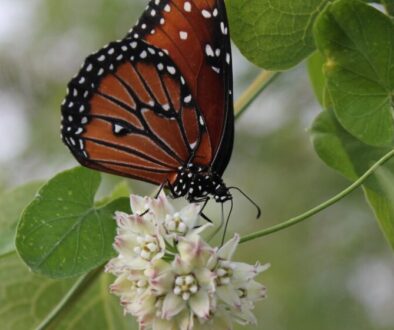Dealing With Frost Damage in the Desert
The Sonoran Desert winter is renowned across the United States for how pleasant it is compared to many other regions, however there are often weather patterns that lead to frosts or even occasional dustings of snow. When this happens, it’s important to follow these precautions to prevent causing permanent damage to your plants.
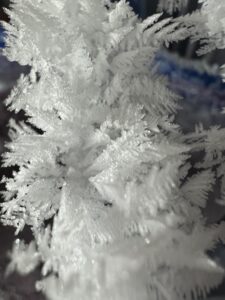
First, it’s important to know that, to a certain extent, frost damage is natural and normal. Simple frost damage can occur even when the temperature is nominally above freezing temperature, even as high as 40 degrees. As long as the temperature doesn’t drop below 29 degrees, simple frost damage should only cause temporary, cosmetic damage to established plants (though recent plantings and plants that are already suffering severe ailments may die). For plants that were chosen for our landscapes specifically for their compatibility with the Sonoran Desert, permanent issues start to arise if the temperature goes below freezing for multiple days in a row, or if snow settles on them for extended periods of time. If these occur, cell death in the bark and roots can cause even established trees and shrubs to lose limbs or, eventually, die.
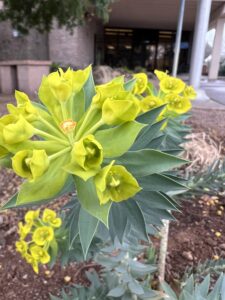
If you look at the weather forecast and you can see that the temperature is expected to reach within 5 degrees of freezing temperature, it’s best to assume that frost damage is possible. Protect young plants and plants that you don’t want to look ugly for a few months with light blankets, towels, or frost cloths overnight to lessen the impact of the cold. Do NOT leave frost coverings on top of plants all day long, or for multiple days in a row without a break! Plants need to breathe too, and keeping the coverings on for too long can cause more damage than the frost itself would have done.
It may seem counterintuitive, but if you know a frost is approaching, you should give sensitive plants EXTRA water beforehand. A day before the frost arrives, give your plants a deeper watering than normal. This will keep the capillaries, roots, and bark of your plants full beforehand, which actually increases the internal temperature of the plants and lessens that damage to plant cells that do get frozen.
It doesn’t happen often, but if it does snow, and that snow lingers for more than an hour or two, you should do your best to shake or otherwise clean the snow off of desert plants that are covered. The ice can cause cell death in desert tree bark. Also, the plants of the desert, especially trees like the Palo Verde and thorny shrubs like the ocotillo, cannot bear the weight of snow for extended periods of time. During the “Snowpocalypse” of 2019, thousands of trees and ocotillos in the East Valley were flattened and killed by the weight of a strong snowfall that lingered for over two days. This was on a scale that could not have been prevented overall, but if the same happens in your yard you can do your best to mitigate the damage.
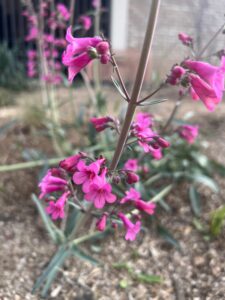
Finally, you need to be careful AFTER the frost is over. Shrubs with superficial frost damage should be LEFT ALONE until the risk of frost is over. Some plants go dormant in the winter, and frost can just be the final step for them to shed their remaining leaves – in which case, it’s okay to cut them back for aesthetics. But, if a bush is meant to be truly perennial and it gets cosmetic frost damage, or if a tree experiences severe frost damage, it is best to leave the damaged portions on the plant until springtime. Even if the branches look ugly and dead, they still provide the living portions of the plant protection from the cold. Wait until the last frosts of the spring are over, and then you can cut off the damaged parts. You’ll have to deal with some ugly looks for longer, but you’ll have healthier plants in the long term.
At ELS Maintenance & Construction, we handle the seasonal needs of plant materials and hardscapes alike with care and professionalism! If you know of a community or commercial center that needs new landscapers, email contactus@evergreenaz.com and we can get started!

